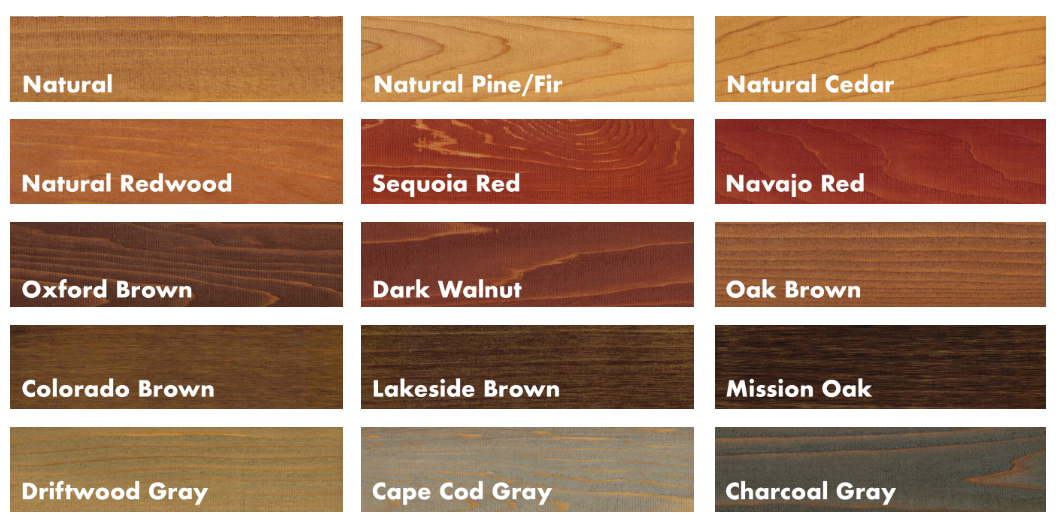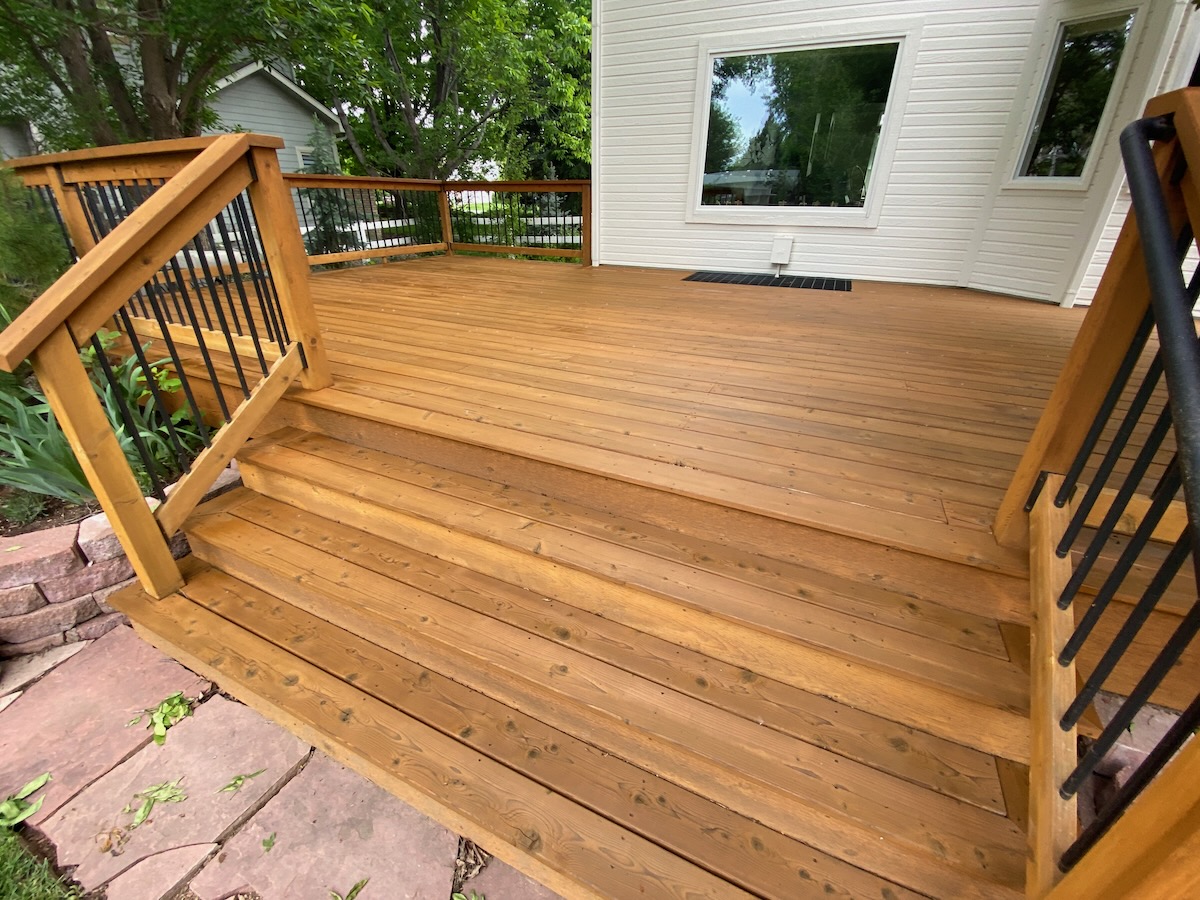A Comprehensive Overview to Various Sorts Of Deck Discoloration Techniques for Ultimate Defense and Looks
In the world of deck upkeep, the art of tarnishing stands as a pivotal step towards both preserving the integrity of your outdoor space and enhancing its visual charm. As we navigate with the elaborate globe of deck staining methods, one begins to appreciate the nuanced methods that can make all the distinction in between an average surface and a perfect one. From the choice of the suitable stain type to the meticulous application approaches, each facet plays an essential role in accomplishing that ideal balance between defense and aesthetics. Join us as we reveal the keys behind accomplishing the supreme deck staining results-- a trip where every brushstroke forms not just the surface, yet the extremely essence of your outdoor refuge.
Recognizing Different Sorts Of Spots
Various kinds of spots are commonly utilized in the process of deck discoloration to achieve various aesthetic and safety impacts. Transparent discolorations are optimal for showcasing the all-natural grain of the wood while providing marginal security against UV rays and moisture. On the other hand, semi-transparent spots offer an equilibrium between shade enhancement and defense, allowing some wood grain to reveal through. For a much more nontransparent surface that gives maximum security versus the elements, solid discolorations are the preferred selection. These stains are available in a vast range of colors and properly conceal the wood grain.
Toners include a tip of shade to the wood while offering minimal protection, making them suitable for more recent decks with much less wear. Recognizing the attributes and advantages of each type of stain is crucial for achieving the wanted appearance and toughness for your deck.
Selecting the Right Spot Color
When taking into consideration the aesthetic appeals of your deck staining project, the selection of discolor color plays a crucial duty in improving the protective qualities of the picked discolor type (Beautiful Deck). The color you pick can dramatically affect the overall appearance of your deck, along with its capability to withstand the components gradually
When selecting a tarnish color, it's important to consider the existing color design of your home's exterior. Integrating the deck discolor with the total visual of your building can produce a visually appealing and natural outdoor room. Additionally, the shade of your deck tarnish can influence the temperature level of the deck surface area; darker shades tend to absorb more warmth, while lighter colors mirror sunshine and remain cooler.
Furthermore, the kind of timber you are staining will also affect how the discolor color appears. Various timber species can connect with the stain in different means, potentially changing the last color. It's a good idea to examine the stain on a little, low-profile area of the deck to make sure the shade ends up as desired before waging the whole project.
Preparing Your Deck for Staining
To make sure a effective and long-lasting deck discoloration task, complete prep work of the deck surface area is important. Begin by cleaning up the deck completely to get rid of dust, crud, mildew, and any old discolor or end up. Use a deck cleaner or a mix of water and detergent along with a rigid brush or pressure washer to scrub the surface clean. After cleaning, allow the deck to dry completely before going on to the next action.
Evaluate the deck for any type of damaged or rotten boards that need to be changed. Hammer down any kind of sticking out nails and sand any kind of harsh areas to guarantee a smooth surface for discoloration. Examine for any type of loose barriers or actions that may need tightening up or repair service.
As soon as the deck is tidy, dry, and in excellent repair work, consider using a wood brightener to recover the deck's natural shade and open up the timber pores for better tarnish penetration. Shield any neighboring plants, furniture, or surfaces with plastic bed linen before continuing with the discoloration process. Correct preparation is crucial to attaining a professional-looking finish and maximizing the durability of your deck tarnish.
Applying Spot With Numerous Techniques
For a perfect and specialist surface, the approach of applying discolor plays a crucial role in improving the look and resilience of your deck. There are a number of strategies you can utilize to guarantee an efficient application of tarnish.
Cleaning is a conventional technique that permits accuracy and control over the quantity of tarnish used. It is ideal for intricate areas and reaching between deck boards (Chicago Deck Staining). Rolling is a quicker option, covering larger surface efficiently. Nevertheless, back-brushing after rolling is suggested to also out the tarnish and check function it right into the timber for far better infiltration.
Splashing is an additional preferred method, using speed and simplicity of application, especially for large deck locations. It is vital to make use of a high-quality sprayer and be mindful of overspray. Pad applicators provide a smooth and also end up and are view appropriate for both horizontal and vertical surfaces. Whichever technique you pick, making certain appropriate preparation and following supplier standards will help attain a lovely and resilient tarnish surface on your deck.

Maintaining and Re-staining Your Deck
Proper upkeep and prompt re-staining are necessary for maintaining the appeal and durability of your deck. Regular upkeep jobs consist of sweeping debris, cleansing with a deck cleaner, and evaluating for any signs of wear or damages. Attending to problems promptly can prevent extra considerable problems in the future. When it comes to re-staining your deck, the regularity depends upon different variables such as the sort of stain made use of, the climate in your area, and just how much damage your deck experiences. Normally, it is recommended to re-stain your deck every 2-4 years to keep its security and visual appeals.
Prior to re-staining, ensure the deck is tidy, completely dry, and devoid of any previous discolor deposit. Sanding might be necessary to ravel rough locations or get rid of old stain that is flaking. Choose a high-quality discolor that fits your deck's material and gives the preferred degree of security. Use the stain uniformly making use of the suitable method discussed earlier in this overview to make certain a lasting and lovely coating - Water-Based Stains. By remaining proactive with maintenance and re-staining, you can take pleasure in a visually attractive and well-protected deck for many years ahead.
Final Thought
Finally, comprehending the various kinds of deck spots, selecting the ideal shade, effectively preparing the deck, using tarnish with different strategies, and keeping and re-staining the deck are necessary actions for utmost security and appearances. By adhering to these actions, you can navigate to this site make sure that your deck stays in top condition for many years to come.
Additionally, the shade of your deck tarnish can affect the temperature of the deck surface; darker shades often tend to take in more warmth, while lighter shades show sunlight and remain cooler.
It's suggested to check the discolor on a small, low-profile location of the deck to guarantee the color transforms out as preferred before continuing with the entire task.
